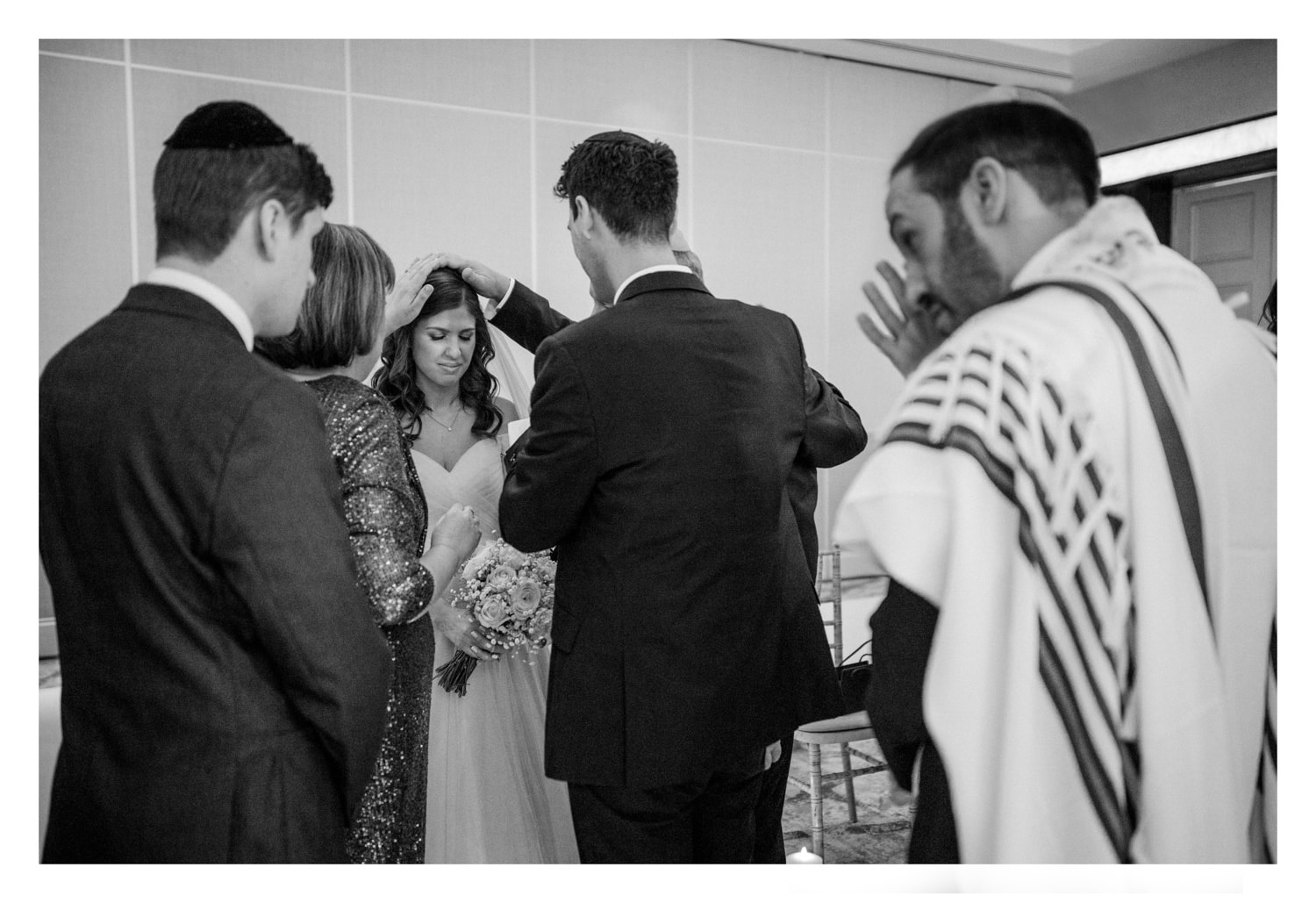Jewish Wedding Tradition – The Badeken
An emotional ceremony that occurs just after the tisch that is always wonderful to photograph. It can be deeply moving and is often full of lovely, intimate moments between family members as they prepare their children to head forward and onto the wedding ceremony. As a jewish wedding photographer, it’s a highlight certainly, the bride typically stays sat down, so it makes composing the story that little bit easier as there is a static element in play. If there are children present, it’s often where they shine. The adults are ignoring them so they have to entertain themselves, and you often encounter mischief occurring in the background!
Kearney & Mark chose to break the glass and had plenty of israeli dancing at their military fusion wedding, check it out!

The word derives from the Yiddish word ‘to cover’, it is where the bride and groom first see each other, and if the groomsmen have done a good job getting the party started, then one can hear the groom coming and thus the anticipation n excitement in the brides room builds. Bear in mind that it is also tradition for the couple to spend time apart before the wedding day, the more traditional the couple, the longer that period will be, so it will likely be an emotional reunion, full of nervous smiles and joyous anticipation.
Typically only very close family and friends are involved in the Badeken, however it does happen where the ceremony is opened up to all the guests to witness, as this is taking place the rest of the guests are then seated and await the Chuppah. This does change the dynamic of the moment considerably and is worth considering how you might feel in those moments. They are emotionally charged, and you may prefer them to remain intimate so you can experience the full emotional weight of it all and be present in the moment without being distracted by all the eyes being upon you. Equally, you may find the whole experience exhilarating and want everyone to feel as involved as possible. As always, it’s your call, make sure you do what’s right for you!
A slight variation on the ceremony occurs if the bride and groom are from Sephardi communities, in this instance the groom walks down the aisle first, and waits under the Chuppah. The bride then walks half way down the aisle, the groom then comes to great her and veils her on he aisle before accompanying her to the Chuppah, as if welcoming he into his home.
The tradition of the Badeken originated from the Bible story of Jacob, who was tricked into marrying the wrong woman. The groom now has the chance to double check just before going ahead with the wedding that he is being married to the right person. He has the opportunity to see her and veil her without there being any chance of a last second switcheroo. The veil itself is an important symbol, much like the smashing of the glass, it symbolises the man marrying the woman for her inner beauty, as her worldly beauty remains hidden. He sees beyond the material and loves her wholly for who she is, not simply for her appearance.
In these last few moments before the parents let their children embark upon the next chapter of life it is not uncommon for them to say blessings. In the same way that couples often write their own vows, there is nothing stopping parents writing their own blessings. Im all for this, anything that makes the day that touch more personal is always a good thing. We get so few opportunities in life to publicly state our affection for our loved ones, why not take this opportunity and let them know how proud you are of them.
Get creative with your choice of location for the Badeken, a beautiful garden, a stately room, your own home? There are no hard and fast rules here, a place that makes you feel at peace is a good place to start, it’s your story, tell it how you w
